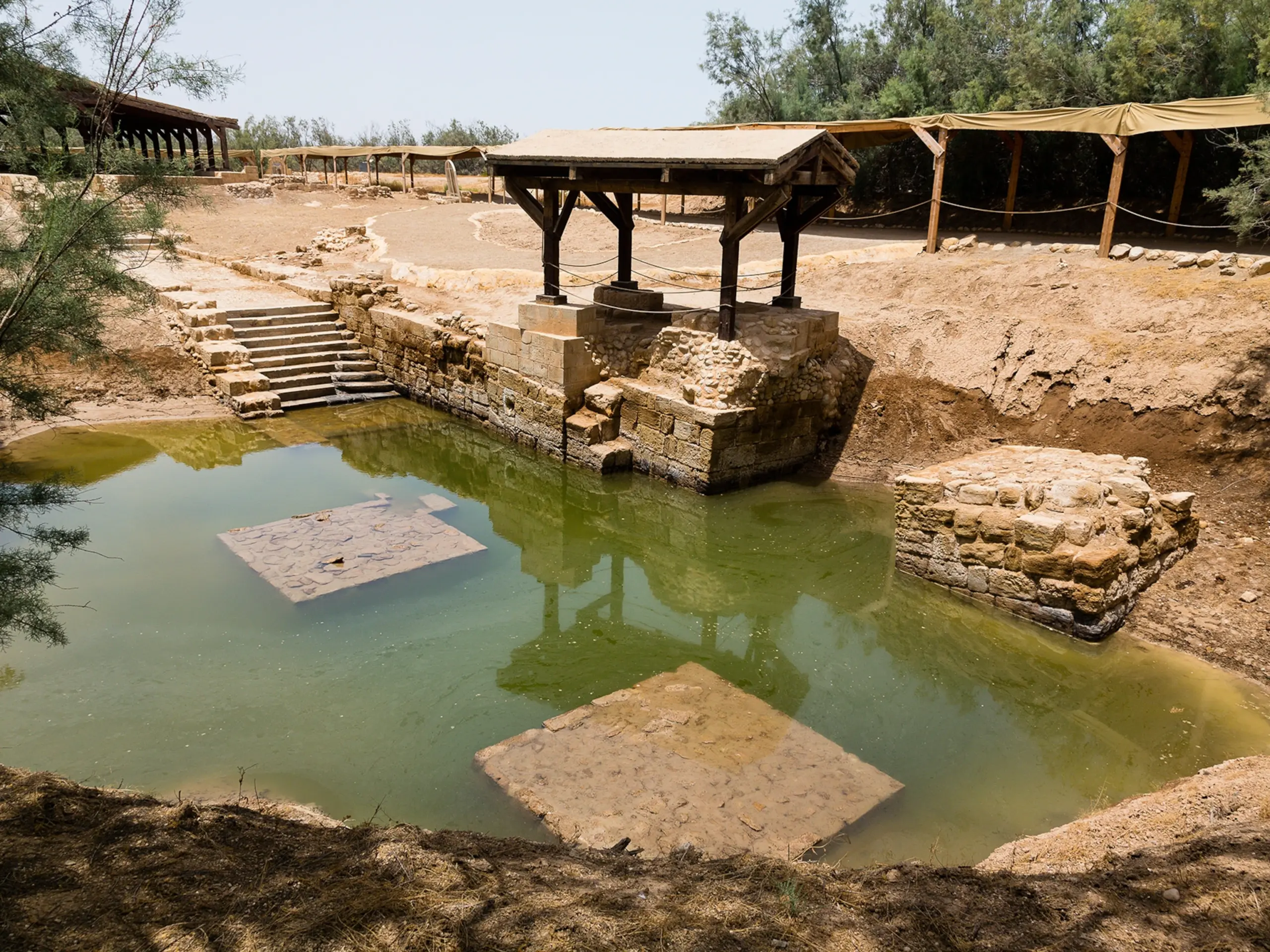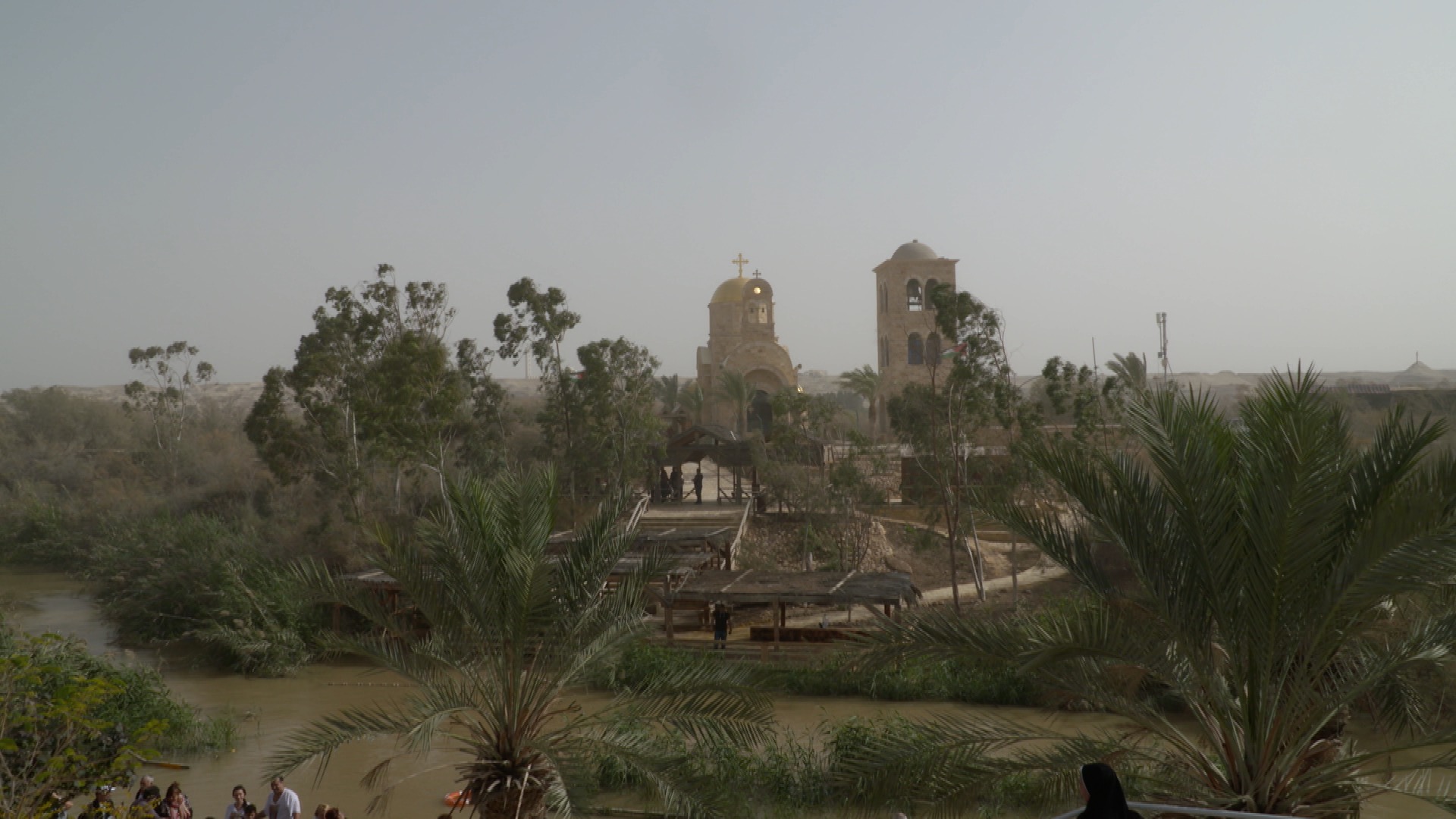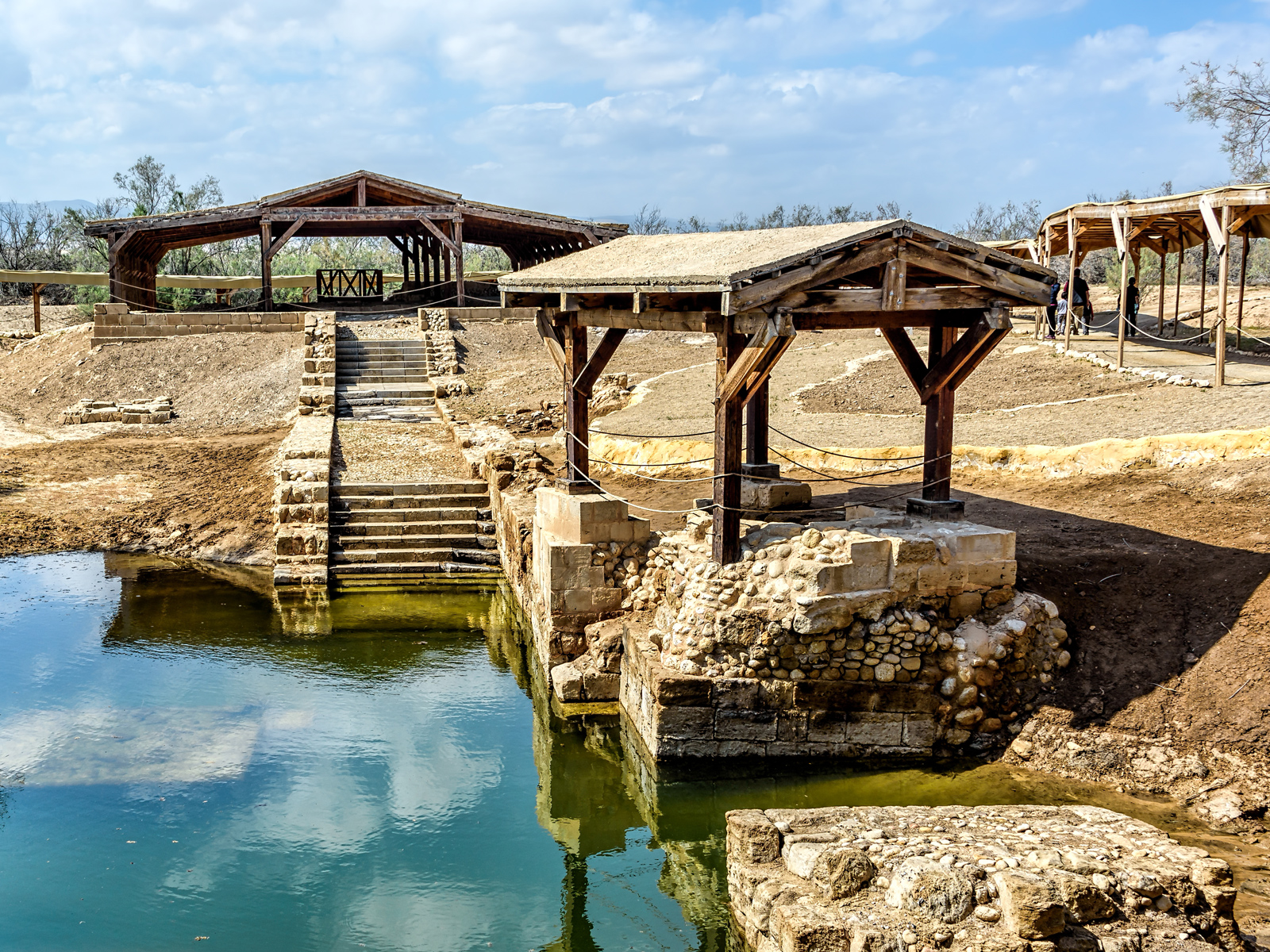Home to several biblical cities including Sodom, Gomorrah, and Zoar, the archaeological discoveries between the Jordan River and Tal al-Kharrar have identified this area as Biblical “Bethany Beyond the Jordan.” The area is where John was living when he baptized Jesus. Designated as a UNESCO World Heritage site, the Baptism Site commission welcomes pilgrims from all around the world seeking spiritual connection to biblical times, a glimpse of history or a chance to be baptized where Jesus was so many years ago.

This stretch of desolate plain flanking the River Jordan has been a focus for spirituality since Old Testament times: Judaism, Christianity and Islam all recall momentous events which took place in this relatively small part of the southern Jordan Valley. The first mention is in Genesis, when Lot separated from Abraham and “chose the plain of Jordan” to pitch his tents, after which Jacob wrestled with God a little way north at Penuel. A sizeable proportion of the Book of Numbers is set at the Israelites’ camp, “pitched in the plains of Moab by Jordan opposite Jericho”, following which Moses delivers a long address in Deuteronomy before going up “from the plains of Moab unto the mountain of Nebo”, where he died. Joshua led the tribes across the river, which miraculously halted its flow, an event mirrored centuries later in 2 Kings, when the prophets Elijah and Elisha again stopped the flow of the river, as a chariot and horses of fire took Elijah up to heaven – according to ancient tradition, from the rounded hillock alongside Wadi Kharrar now known as Tell Mar Elyas (Elijah’s Hill).
It was because of the associations with the prophet Elijah that, a thousand years later, John, an ascetic holy man with a prophetic vision, took up residence near the same hillock, using the numerous small springs of sweet water to symbolically cleanse people of sin; locals soon flocked to this John the Baptist. Most biblical mentions describe the baptisms taking place “in Jordan”, which probably referred loosely to this general area. The River Jordan, which often flooded to a width of 1km or more, would have been deep and rapid (in Aramaic, yardeen – from which “Jordan” is derived – means “fast-flowing water”), offering no easy access from the often steep bank. By contrast, the dozens of tiny side-springs, some of which rise within pools barely 100m from the river, are protected and more manageable as immersion points.


The Gospel of St John mentions “Bethany-beyond-the-Jordan, where John was baptizing”; the spot – unconnected with Bethany near Jerusalem – was also known as Bethabara or Beit-Abara, “the House of the Crossing-Point”. A later account says that Jesus “returned again across the Jordan to the place where John had first started baptizing”.
There is no explicit mention of when or where John baptized Jesus, but the accumulated weight of tradition and historical evidence places it in or near Wadi Kharrar, with plentiful supplies of spring water, alongside the Roman road between Jericho and Nebo (thereby within easy reach of potential converts), but far enough out of reach to mean that John could criticize King Herod with impunity.